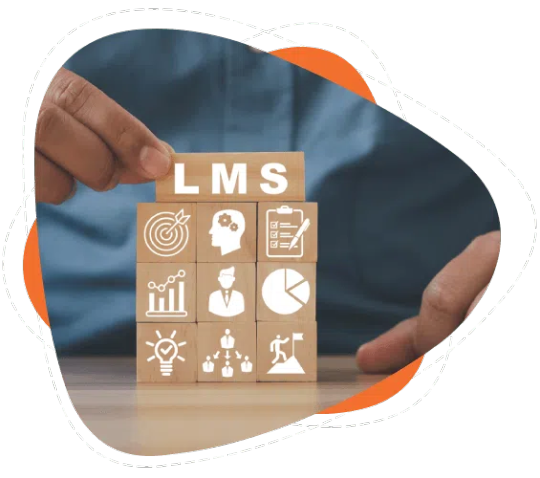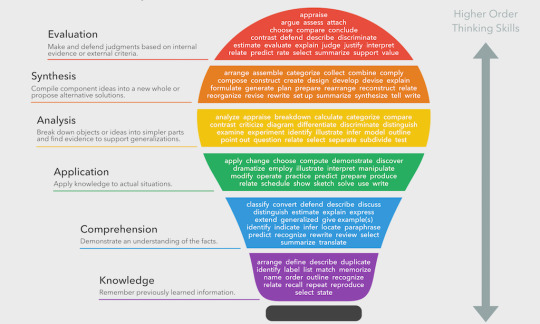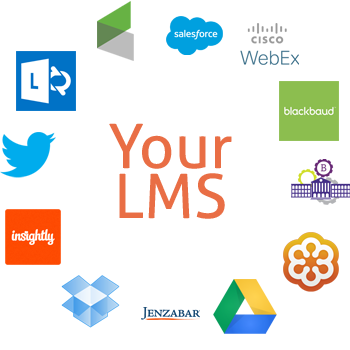Text
How Badges & Certificates Make Online Learning Fun
Certificates serve as digital testaments to one's accomplishments, validating the successful completion of courses and programs. These virtual credentials not only attest to one's dedication and expertise but also hold immense value in the eyes of employers and peers.
Enter gamification in Learning Management Systems (LMS) – where certificates and badges become your secret weapons to slay those courses!
Here's why:
Certificates
Think of these as proof you conquered a course. Earn one and proudly display it on LinkedIn or your online portfolio.
Badges
Get these for completing modules or mastering a skill. They're like little pats on the back that keep you pumped to learn more!
How They Supercharge Learning
Motivation Boost: Badges and certificates keep learners wanting to learn more, just like collecting coins in a game!
Stay on Track: Knowing a badge awaits completion of a module gives learners that extra push to keep learning.
Show Off Your Skills: Certificates are like shareable badges of honor for potential employers to see!
To Wrap Up
In essence, certificates and badges are more than just virtual accolades; they are catalysts for growth, empowerment, and recognition in the digital learning landscape. As we harness the power of LMS platforms like BrainCert, let us embrace the potential of certificates and badges to transform the way we learn, grow, and succeed in the digital age.
0 notes
Text
How Online Whiteboards Rule Digital Learning
Remember those dusty chalkboards and endless PowerPoint snooze-fests?
Yeah, not anymore!
Online whiteboards are like the cool, interactive cousin of traditional learning tools, taking digital education to a whole new level.
Here's why you embrace the new:
Creativity Unleashed: Think beyond text and slides!
Draw mind maps, sketch ideas, brainstorm like crazy - it's like having a giant canvas for your imagination.
Collaboration Made Easy: Work together in real-time, no matter where you are.
Engagement Explosion: Ditch the passive listening and get active! Whiteboards let you participate, discuss, and learn together in a dynamic way.
Personalized Paths: Tailor your learning experience!
Annotate, highlight, and explore at your own pace. It's all about you.
Futureproof Learning: These boards are constantly evolving, offering new features and possibilities.
The future of learning is interactive, personalized, and oh-so-engaging! ✨
Ready to join the whiteboard revolution?
Share your favorite ways to use online whiteboards in the comments! Let's turn learning into a collaborative adventure!
0 notes
Text
BrainCert: Making Learning Easy, Payments Even Easier!

Ready to learn something new with BrainCert?
Before you dive in, let's talk about something else just as important: paying securely and conveniently.
BrainCert understands that seamless payment options are crucial for a smooth learning experience.
That's why they've partnered with several top payment gateways to make paying for courses a breeze.
Here are your payment gateways:
PayPal: The global giant, trusted by millions, lets you pay with your balance, bank account, or card.
Stripe: Designed for developers, it's easy to integrate and offers various payment methods like cards and wallets.
Paystack: Africa's leader, perfect for reaching learners across the continent with local and international options.
Payumoney: Trusted in India, it offers diverse payment methods like cards, net banking, and wallets for convenient local payments.
Point&pay: Providing secure and customizable solutions tailored to different needs and industries.
No matter where you are or how you prefer to pay, BrainCert has you covered. Plus, they handle security seriously, using industry standards to keep your information safe.
So, choose your learning adventure, pick your favorite payment method, and get ready to unlock new skills with BrainCert! Remember, they're making learning fun and payments even easier.
#BrainCert#OnlineLearning#EduTech#PaymentGateway#DigitalCommerce#SecurePayments#ECommerceSolutions#Fintech#LearningManagement#UserExperience
0 notes
Text
Unlocking Learner Resources in the 21st Century

In the age of the internet, smartphones, and endless technological wonders, learning no longer starts and ends in the classroom. We live in a digital era where the pursuit of knowledge is just a click away.
So, let's jump into the wealth of learner resources that this digital age has to offer.
Online Courses for the Curious Mind
Online courses and e-learning platforms are like the academies of the 21st century.
Platforms such as Coursera, edX, and BrainCert have democratized education. From coding to art history, you can enroll in a course from the comfort of your couch.
These platforms are breaking the barriers to knowledge, and making learning accessible to everyone.
The Infinite Digital Library
Remember the days of library cards and late fees?
Thanks to digital libraries like Project Gutenberg and Google Books, the library is now open 24/7. Classic literature, modern novels, research papers – you name it, it's there. Reading has never been more accessible.
Webinars and Podcasts on the Fly
Are you a multitasker?
Webinars and podcasts are here to save the day. From career development to scientific breakthroughs, they offer valuable insights in a format you can enjoy during your morning jog or daily commute.
The Open Educational Revolution
Open Educational Resources (OERs) are changing the game for educators and learners.
Websites like OER Commons and MERLOT offer free access to learning materials. This means you can say goodbye to those expensive textbooks.
Virtual Reality (VR) and Augmented Reality (AR)
VR and AR are revolutionizing education.
From virtual science experiments to guided tours through history, these technologies are providing immersive learning experiences like never before.
Access to Research and Academic Journals
Accessing academic research used to be a quest. Now, websites like JSTOR and Google Scholar make it as easy as ordering pizza. They provide access to a world of academic knowledge.
Embrace BrainCert
BrainCert is your portal to a world of diverse learning resources. It's not just about courses; it's about a holistic learning experience, offering virtual classrooms, exams, and certifications.
Conclusion:
The digital age has empowered learners like never before. Whether you're a learner, a professional, or someone who simply loves to learn, the digital era offers an ocean of opportunities.
So, in this digital adventure, dive in! The world of knowledge is at your fingertips, waiting for you to explore and grow.
0 notes
Text
Creating Inclusive Online Learning: LMS Accessibility and Universal Design Principles

Learning Management Systems (LMS) have made it possible for learners to access courses and resources from anywhere in the world. However, for online education to be truly effective and inclusive, we need to prioritize LMS accessibility and embrace Universal Design Principles.
LMS Accessibility: A Necessity, Not an Option
LMS accessibility refers to making online learning platforms and content accessible to everyone, regardless of their physical or cognitive abilities.
It's about breaking down barriers and ensuring that no learner is left behind. Here are some key aspects of LMS accessibility:
Alternative Text for Images: All images should have descriptive alternative text, allowing screen readers to convey the content to visually impaired learners.
Captioning and Transcripts: Video and audio content should include captions or transcripts to assist those with hearing impairments.
Readability: Text should be presented in a readable format with good contrast and the option to enlarge text for those with visual impairments.
Keyboard Navigation: The LMS should be navigable using a keyboard alone, making it accessible to individuals who can't use a mouse.
Universal Design Principles: A Blueprint for Inclusivity
Universal Design Principles offer a comprehensive framework for creating inclusive online learning experiences.
These principles benefit not only individuals with disabilities but everyone.
The seven core principles of Universal Design are:
Equitable Use: Make the LMS useful to people with diverse abilities.
Flexibility in Use: Accommodate a wide range of individual preferences and abilities.
Simple and Intuitive Use: Ensure that the LMS is easy to understand, regardless of users' experience or abilities.
Perceptible Information: Communicate necessary information effectively to users, regardless of sensory abilities.
Tolerance for Error: Minimize the adverse consequences of accidental or unintended actions.
Low Physical Effort: Make it efficient and comfortable to use the LMS with minimal fatigue.
Size and Space for Approach and Use: Provide appropriate size and space for all users, regardless of body size, posture, or mobility.
Putting Principles into Practice
Implementing Universal Design Principles in your LMS courses involves practical steps:
Diverse Content Formats: Offer content in various formats (text, audio, video) to accommodate diverse learning styles.
Flexible Assessment Methods: Provide multiple ways for learners to demonstrate their understanding.
User-Friendly Navigation: Design an intuitive and consistent layout for easy navigation.
Accessible Learning Materials: Ensure that all course materials adhere to accessibility standards.
By adopting LMS accessibility and Universal Design Principles, we can create a more inclusive online learning environment. Education should be a gateway to knowledge, open to all who seek it. Let's make that a reality in the digital age.
0 notes
Text
Open Source vs. Commercial Platforms: Making the Right Choice

In a world where digital solutions have become a staple for education, businesses, and personal endeavors, choosing the right platform is a critical decision. It often boils down to a fundamental choice: open source or commercial platforms.
Let's explore this decision-making process.
Understanding Open Source Platforms
Open source platforms are like a canvas waiting for your artistic touch:
1. Cost-Effective: These platforms are often free, making them budget-friendly.
2. Customization: With open source, you have the freedom to tailor the platform to your unique needs.
3. Community Support: A community of developers ensures regular updates and improvements.
Understanding Commercial Platforms
Commercial platforms offer convenience and pre-packaged features:
1. Ease of Use: They're designed to be user-friendly, suitable for those with limited technical expertise.
2. Dedicated Support: You'll receive dedicated customer support to assist with any issues or questions.
3. Feature-Rich: Commercial platforms come with a variety of features and integrations right out of the box.
Making the Right Choice
Here's how to navigate this decision:
1. Budget: Assess your financial resources and consider the costs beyond the initial price tag.
2. Technical Expertise: Evaluate your team's technical skills. Less technical expertise may point towards a commercial platform.
3. Scaling Needs: Think about your organization's growth. Ensure your chosen platform can grow with you.
4. Support and Maintenance: Determine your need for ongoing support. Commercial platforms typically offer robust support options.
Click the link below to learn more!
Ultimately, there's no one-size-fits-all answer.
Your decision will be influenced by your individual situation. Whether you opt for the freedom of open source or the ease of commercial platforms, your choice will determine the path of your digital experience. Make a wise selection and embrace the potential that awaits!
0 notes
Text
Mastering Training Planning: Strategies and Tips for Success

In today's fast-paced world, training has become an integral part of personal and professional growth. Whether you're an educator, a corporate trainer, or an entrepreneur shaping your team's skills, effective training planning is essential. Let's explore some key practices and success tips to help you design training that truly delivers results.
1. Set Clear Objectives
Every successful training program begins with crystal-clear objectives. Define precisely what you want your learners to achieve by the end of the training. These objectives act as guiding stars, ensuring that your training remains focused and purposeful.
2. Know Your Audience
One size does not fit all in training. Take the time to understand your audience's needs, knowledge levels, and learning preferences. Tailor your training to address their specific requirements and make it relatable.
3. Craft Engaging Content
Content is king, even in training. Create content that's not just informative but engaging. Utilize multimedia, interactive elements, and real-world examples to captivate your learners and keep them motivated.
4. Plan a Structured Curriculum
Structure is the backbone of any training program. Organize your content in a logical sequence, ensuring that each topic builds upon the previous one. A well-structured curriculum provides a smooth learning experience.
5. Include Assessments and Feedback
Assessments are vital for measuring progress. Implement regular quizzes, tests, or assignments to gauge learner comprehension. Provide constructive feedback to help learners understand their strengths and areas for improvement.
6. Adapt and Evolve
In an ever-changing landscape, adaptability is key. Be prepared to revise your training plan based on learner feedback and changing needs. A flexible approach ensures that your training remains relevant and effective.
Conclusion
Creating impactful training plans requires a strategic blend of BrainCert's tools, empathy for your learners, and adaptability to changing needs. By embracing these core practices and success strategies, you can craft training programs that empower your audience and deliver exceptional results.
0 notes
Text
Crafting SCORM-Compliant Content: A Guide for E-Learning Creators

Learning Management Systems (LMS) have emerged as powerful tools to deliver courses and educational content seamlessly. But what if you want your content to play well with different LMS platforms? Enter SCORM, the Sharable Content Object Reference Model. In this brief guide, we'll demystify SCORM and walk you through the process of creating SCORM-compliant content, ensuring compatibility and accessibility.
Understanding SCORM
At its core, SCORM is a set of technical standards that govern how e-learning content interacts with various LMS systems. Think of it as the universal language that allows different platforms to communicate.
SCORM ensures that your e-learning content can be smoothly integrated into any SCORM-compliant LMS.
Why SCORM Matters
SCORM's significance lies in its ability to solve a critical challenge in the e-learning realm—interoperability. It ensures that your courses and modules can seamlessly integrate with various LMS systems. Whether you're an educator or a corporate trainer, SCORM guarantees that your content can be used across different platforms without a hitch.
Creating SCORM-Compliant Content
Now, let's get on the journey to create SCORM-compliant e-learning content:
1. Choose the Right Authoring Tool:
Your journey begins by selecting an authoring tool that supports the SCORM standard. Options like Adobe Captivate, Articulate Storyline, and Lectora are popular choices, offering user-friendly interfaces to craft interactive courses.
2. Develop Your Content:
Within your chosen authoring tool, you can create engaging e-learning content, including slides, quizzes, interactive simulations, and multimedia elements. Ensure that your content aligns with your learning objectives.
3. Set SCORM Parameters:
Most authoring tools provide options to configure SCORM parameters. Here, you'll define critical details such as the course title, description, completion criteria, and pass/fail requirements. These parameters are vital for tracking and reporting within the LMS.
4. Publish as a SCORM Package:
Once your content is polished and ready, publish it as a SCORM package. This typically involves selecting the SCORM version you prefer (SCORM 1.2 or SCORM 2004) and generating the necessary package files.
5. Upload to Your LMS:
Now, it's time to upload the SCORM package to your LMS. Most modern LMS platforms offer user-friendly interfaces for importing SCORM content. Simply follow the platform's instructions to import your course.
6. Test and Debug:
Before making your course live, thorough testing is essential within your LMS. Check for navigation issues, quiz functionality, and tracking accuracy. Debug and make any necessary adjustments.
7. Publish and Deploy:
Once you're satisfied with your SCORM-compliant content and it operates seamlessly within your LMS, you can publish and deploy it to your intended audience.
Conclusion
In conclusion, SCORM is your bridge to compatibility and interoperability in the world of e-learning. By understanding SCORM's essence and following the steps outlined above, you can create e-learning content that effortlessly integrates into various LMS platforms. This empowers you to deliver impactful online courses while retaining flexibility and scalability. Embrace SCORM, and elevate your e-learning content to new heights!
0 notes
Text
LMS ROI: A Guide to Measuring Success in Your Industry

In the ever-evolving world of education and business, Learning Management Systems (LMS) have become essential instruments. They empower organizations and educational institutions to deliver effective training and education.
But how can you measure the impact and success of your LMS investment?
Let's get on a brief journey to explore this essential aspect.
Defining Clear Objectives
The first step in measuring LMS success is setting clear objectives.
What do you aim to achieve with your LMS?
Is it boosting employee performance, reducing training costs, or improving learner outcomes? Crystal-clear objectives are the compass that guides your measurement efforts.
The Ledger of Costs
Any journey requires resources, and implementing an LMS is no different.
You need to understand the costs involved, both direct and indirect.
Direct costs include licensing fees, content creation, and maintenance. Indirect costs may encompass the time employees spend on training.
Once you've mapped out these expenses, you're ready to proceed.
Voices of Experience
Never underestimate the importance of feedback.
Gather insights from learners, instructors, and administrators. Their perspectives provide a qualitative dimension to your measurements. User satisfaction and engagement are vital indicators of success.
Comparison to Benchmarks
To gauge your progress accurately, use industry benchmarks or your organization's historical data as reference points.
This helps you understand how you're performing compared to established standards.
Industry-Specific Considerations
Each industry has its unique success parameters. Consider what matters most in your field. For instance, healthcare might focus on patient outcomes, while retail could emphasize sales and customer satisfaction.
To Wrap Up
In conclusion, measuring LMS ROI is an ongoing journey, not a one-time destination. It's about informed decision-making and program optimization. With these tools and BrainCert by your side, you're well-prepared to navigate this journey effectively.
Your LMS ROI adventure awaits!
Click to learn more!
0 notes
Text
Top Course Highlights to Seek in an LMS Platform

Choosing the right Learning Management System (LMS) platform can be a thrilling adventure, but with countless options available, it's essential to know what to look for.
First on your checklist should be a user-friendly interface that makes navigating courses a breeze.
No one wants to wrestle with a labyrinthine system, right?
Next up, consider mobile compatibility – the ability to learn on the go, whether it's on your laptop, tablet, or smartphone.
Versatility in content management is also key; your LMS should handle various formats, from text to interactive elements, letting you craft engaging courses.
Don't forget tracking and reporting tools – they're like your personal course GPS, helping you chart your progress.
Assessment and grading should be smooth and efficient, and collaboration features like discussion forums add an extra layer of interaction.
Integration capabilities?
Yes, please! Your LMS should play nice with other tools, and data security should be a top priority.
Having access to robust support and training resources is like having a trusty guide on your journey.
With these course highlights in mind, you're ready to venture on your learning adventure with confidence. 📚
How BrainCert Helps
With BrainCert, you're not just choosing an LMS platform; you're opting for an enriching educational experience.
Its user-friendly interface, mobile compatibility, content management prowess, and comprehensive tracking tools make it a standout choice.
BrainCert also excels in assessment and grading, fosters collaboration, offers seamless integration and ensures data security.
Plus, with our exceptional support and training resources, you're never alone in your quest for knowledge.
To Conclude
In conclusion, finding the perfect LMS platform is like discovering a treasure chest for your learning journey, and knowing what course highlights to seek is your map to success. So, set sail on your learning adventure with BrainCert as your trusted companion, and unlock a world of educational possibilities! 📖
Click below to learn more!
0 notes
Text
AI-Based Content Generation Tools

What is AI-generated content?
AI-generated content refers to text, images, or even videos produced with AI algorithms' assistance. These algorithms can analyze data, understand patterns, and generate content miming human-created content.
Types of AI-Powered Content Generation Tools
Natural Language Generation (NLG)
Natural Language Generation is a subset of AI that focuses on generating human-like text. It’s particularly useful for creating product descriptions, news articles, and even personalized email responses.
Content Curation with AI
AI can assist in content curation, helping you find relevant articles, blog posts, or videos from the vast ocean of online content. It can also summarize longer pieces into concise snippets, making it an invaluable tool for content marketers and researchers.
AI-Powered SEO Content
SEO is crucial for online visibility, and AI can enhance your SEO efforts by suggesting keywords, optimizing meta tags, and even generating SEO-friendly content.
Step-by-Step Guide
Select the Right AI Tool
Collect data and Prepare
Train Your AI Model
Generate Content
Review and Edit
The utilization of AI in content creation has presented fresh opportunities. By adhering to this detailed manual and adopting optimal strategies, you can effectively utilize AI to simplify your content creation procedure and maintain a competitive edge in the digital realm.
0 notes
Text
Virtual Classroom Etiquette: Your Guide to Success

As online learning becomes the new norm, it's crucial to understand the ins and outs of the virtual classroom. Just like you'd be polite and respectful in a physical classroom, there are etiquettes to follow in the online world to make the most of your learning journey.
1. Create a Study Environment:
Do: Find a quiet, well-lit spot free from distractions.
Don't: Try to learn in a noisy café or in front of the TV.
2. Show Up On Time:
Do: Log in a bit early to test your tech and show respect for your instructor.
Don't: Roll in late and disrupt the class; it's just not cool.
3. Get Involved:
Do: Engage in discussions, ask questions, and collaborate with your peers.
Don't: Be a silent observer; active participation enriches your learning.
4. Mic and Camera Etiquette:
Do: Mute your mic when not speaking to avoid background noise. Use your camera to connect.
Don't: Leave your mic on with chaos in the background, or hide behind a blank screen.
5. Respect Everyone:
Do: Address your instructor and classmates professionally.
Don't: Use disrespectful language or behave inappropriately; it's a learning environment.
6. Connect with Peers:
Do: Build connections with fellow learners, just like in physical classrooms.
Don't: Isolate yourself; connecting with peers can enhance your learning.
In a Nutshell:
In a nutshell, mastering virtual classroom etiquette isn't just about being polite; it's about creating a conducive learning environment for everyone. These simple dos and don'ts can make your online learning experience more successful, engaging, and enjoyable.
So, as you navigate this digital learning landscape, remember: that good etiquette will take you far.
0 notes
Text
Designing eLearning Using Anderson's Revised Taxonomy

Designing effective eLearning experiences is all about catering to diverse learning styles and cognitive processes. Anderson's Revised Taxonomy provides a powerful framework for achieving just that. It shifts the focus from traditional knowledge-centric learning to a more dynamic, skills-oriented approach.
Anderson's Revised Taxonomy is a valuable framework for designing eLearning experiences.
It shifts the focus from rote memorization to skills development.
The taxonomy encourages learners to remember, understand, apply, analyze, evaluate, and create knowledge.
It guides instructional designers to create engaging eLearning content.
By embracing this taxonomy, eLearning can become more active, immersive, and impactful.
It fosters critical thinking and problem-solving skills in learners.
By embracing Anderson's Revised Taxonomy, we can transform eLearning from a passive information transfer to an active, immersive, and deeply impactful educational journey.
0 notes
Text
Enhance Your LMS Strategy with Integrations

In the ever-evolving world of online learning, staying ahead means being open to innovation.
One powerful way to bolster your Learning Management System (LMS) strategy is through integrations.
Think of it as expanding your LMS toolkit, where each integration adds a new, specialized skill. It's like giving your LMS superpowers.
From simplifying user authentication and enriching content options to tracking progress with analytics and fostering collaboration, integrations open up a world of possibilities.
They empower your LMS to evolve with the times, ensuring your eLearning strategy remains fresh and effective.
So, jump into the world of LMS integrations and watch your online learning ecosystem thrive. 🚀📚
Read more about Integrating Tools using the link below
#eLearning #LMS #Integrations #OnlineLearning #EdTech
0 notes
Text
6 Steps to Become a Successful Affiliate Marketer

Are you intrigued by the idea of turning your passion for online content into a lucrative income stream? We're here to guide you on the exciting journey of becoming a successful affiliate marketer!
Step 1: Choose Your Niche
Finding your niche is like discovering your secret superpower. Jump into something you're genuinely passionate about – whether it's fitness, fashion, tech, or travel. Your enthusiasm will shine through your content and attract an engaged audience.
Step 2: Create Valuable Content
Content is king in the world of affiliate marketing. Craft insightful blog posts, engaging videos, or captivating social media updates that resonate with your audience. Address their pain points, offer solutions, and subtly incorporate your affiliate products.
Step 3: Be Transparent and Build Trust
Honesty is the best policy. Be transparent with your audience about your affiliate relationships – it builds trust and credibility. Share personal experiences with the products, and focus on how they've genuinely benefited you.
Step 4: Optimize Your Content for Conversions
Learn the art of call-to-actions and conversion optimization. Guide your audience towards taking action – clicking on your affiliate links. Use persuasive language, compelling visuals, and well-placed links to lead them to the products you're promoting.
Step 5: Analyze and Adapt
Track your affiliate performance using analytics tools provided by affiliate programs or third-party platforms. Study what's working and what's not. Adapt your strategies based on the data to continuously improve your results.
Step 6: Stay Consistent
Consistency is the secret sauce to affiliate marketing success. Keep producing valuable content, engaging with your audience, and refining your strategies. It's a journey that requires dedication, but the rewards are worth it.
Remember, becoming a successful affiliate marketer takes time and effort, but with the right mindset and strategies, you can turn your online presence into a thriving source of income.
Ready to get on this exciting adventure?
Start by selecting the perfect niche and login to BrainCert to walk towards affiliate success! 🌟👉 Read more 👈
0 notes
Text
VCaaS and Its Impact on Equal Education

Ever imagined a classroom without boundaries, where learning transcends borders and limitations?
Virtual Classroom as a Service (VCaaS) is the compass guiding us there.
Imagine a learner from a remote village exchanging ideas with peers from bustling cities, all in the virtual realm. It's more than just technology; it's a bridge that connects minds across distances.
VCaaS personalizes learning, adapting to individual styles, ensuring no learner gets left behind.
Educators, once confined by geography, now have the power to inspire globally.
This digital marvel doesn't just provide education; it offers possibilities.
For those in underserved areas, VCaaS is a window to a brighter future, erasing educational inequalities.
Challenges exist, yes, but as we navigate them, we pave the way for an inclusive educational landscape.
VCaaS is shaping the future of learning, where no one's potential goes untapped, and where education gaps become a thing of the past. To learn more about Virtual Classroom as a Service (VCaaS), click the link below.
🌍📚🚀 #VCaaS #EducationEquality #DigitalLearning
0 notes
Text
Adapting Sales Training for You

Hey, sales Enthusiasts!
Let's dive into a game-changing concept – adapting sales training to fit your unique learning style.
Get ready for a journey that transforms the way you learn and excel in sales.
🌟 Visual Learners: Think charts, videos, and infographics lighting up your learning path. Visualize success as you conquer complex concepts through visual aids.
🔊 Auditory Learners: Your symphony of success thrives on discussions and dialogues. Dive into verbal exchanges, discussions, and role-playing – the keys to your learning kingdom.
📚 Reading/Writing Learners: Words are your companions. Delve into articles, notes, and reflective writing to master the art of sales.
🎮 Kinesthetic Learners: Dive into immersive experiences. Role-playing, hands-on activities, and interactive workshops pave your path to sales mastery.
✨ Golden Rule: Recognize your learning style, blend diverse elements, and unlock your potential. It's not just what you learn, but how you learn that shapes your sales success.
🤔 Quick Quiz: Which learning style thrives on interactive experiences like role-playing?
A) Visual Learners
B) Auditory Learners
C) Reading/Writing Learners
D) Kinesthetic Learners
Share your answer with us. ✨
Click the link below to learn more about Sales Training.
0 notes